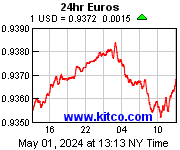COVID-IHU #20
Version 1 du 29 Juin 2020
Culture of SARS-CoV-2 in a panel of laboratory cell lines
Nathalie Wurtz, Gwilherm Penant, Priscilla Jardot, Nathalie Duclos and Bernard La Scola
Abstract
Purpose
The emergence of COVID-19 disease due to SARS-CoV-2 at the end of 2019 was rapidly associated with the isolation of the strain from co-culture onto VERO cells. These isolations quickly made it possible to carry out the first tests for antiviral agents’ susceptibility and drug repurposing. However, it seems important to make an inventory of all the cells that can support the growth of this virus, with the aim of producing it in large quantities, to test new antiviral molecules on cells closer to human lung cells, to better understand its cell cycle, to start developing vaccines based on attenuated strains.
Methods
In the present work, we tested a strain of SARS-CoV-2 locally isolated on a panel of 30 cell lines present in our laboratory and commonly used for the isolation of human pathogenic microorganism. After inoculation, cells were observed for cytopathic effects and quantitative real time polymerase reaction was used to measure the virus replication on the cells.
Results
We were able to obtain growth on 8 cell lines, 6 simian and 2 human, HEP-2 and Caco-2. The cytopathogenic effects are variable, ranging from lysis of the cell monolayer in 48-72 hours to no cytopathic effect in spite of intense multiplication, as in Caco-2 cells.
Conclusion
In this paper, we explored the species specificity and tissue tropism of SARS-CoV-2 in vitro on a panel of cells available in our laboratory and identified human and animal cell lines susceptible to support SARS-CoV-2 replication.


